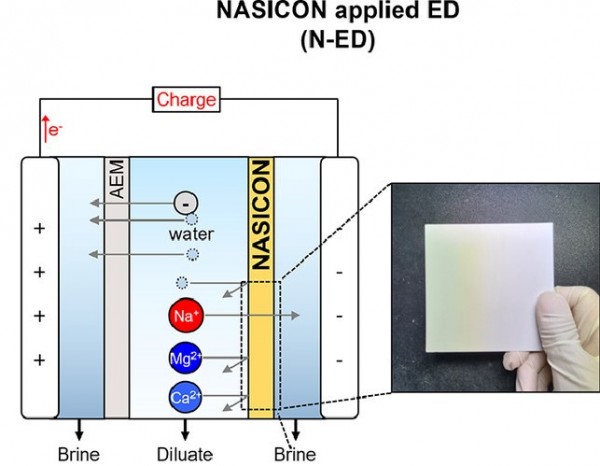A Na+ ion-selective desalination system utilizing a NASICON ceramic membrane
- Journal
- Water Research
- Vol
- 215
- Page
- 118250
- Year
- 2022
Seawater is a virtually unlimited source of minerals and water. Hence, electrodialysis (ED) is an attractive route for selective seawater desalination due to the selectivity of its ion exchange membrane (IEM) toward the target ion. However, a solution-like IEM, which is permeable to water and ions other than the target ion, results in the leakage of water as well as extraction of unwanted ions. This degrades the productivity and purity of the system. In this study, A novel desalination system was developed by replacing the cation exchange membrane (CEM) with a Na super ionic conductor (NASICON) in ED. NASICON exceptionally permits Na+ ion migration, and this enhanced the productivity of desalted water by removing 98% of Na+ while retaining water and other cationic minerals. Therefore, the final volume of desalted water in N-ED was 1.36 times larger compared to that of ED. In addition, the specific energy consumption for salt (NaCl) extraction was reduced by ∼13%. Furthermore, the NASICON in N-ED was replaced into a two-sided NASICON-structured rechargeable seawater battery, thereby further conserving ∼20% energy by simultaneously coupling selective desalination with energy storage. Our findings have positive implications and further optimizations of the NASICON will enable practical and energy-effective applications for seawater utilization.

